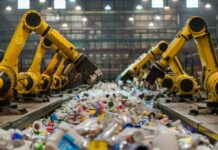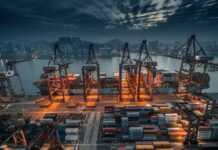According to a survey issued by R.R. Donnelley & Sons Company (RRD), 90% of packaging decision makers changed the way their packaging is obtained as a result of the market’s most immediate concerns, forcing them to reassess their processes and change their focus. The Unpackaging Reality Report examines how the business has been affected by convergent disruptive concerns including supply chain instability, inflation, staff shortages, and mounting environmental consequences.
Over half of the respondents to RRD’s study, which polled 300 packaging decision-makers in the U.S., said they had been adversely affected by material price increases and supply issues over the last year. These difficulties, among others, compelled businesses to reassess their priorities in terms of packaging materials (68%), finance (52%), packaging design and appeal (49%), and sustainability objectives (45% ). The analysis showed that, altogether, the packaging industry demonstrated resilience and kept moving toward a more ecological and inventive future despite the numerous difficulties caused by the outbreak and downstream problems.
According to President, Packaging, Labels and Forms, Retail Solutions at RRD, Lisa Pruett, there’s no denying that growing costs, supply chain snares, and talent crunch have created huge problems for the packaging business, but it doesn’t imply this reality is all doom and gloom. The industry has become more innovative, adaptable, and ecologically concerned as a result of these obstacles. There is no one-size-fits-all method for taming setbacks, so businesses react with a variety of techniques.
In order to provide decision-makers with insight into this complex world of enormous opportunity and difficulties, RRD, a major global supplier of marketing, packaging, print, and supply chain solutions, undertook a thorough poll. The study’s primary conclusions highlight the packaging sector’s readiness to adapt business practises in the face of difficulties without losing track of sustainability goals.
Key Finding 1: Innovation Is Sparked by Supply Chain Challenges
Organizations have been open to investigating a wide range of supply chain solutions in order to handle the market problems. In particular, 62% of suppliers diversified; 42% outsourced production and delivery; 39% of suppliers consolidated; 30% of suppliers changed specifications; and 26% of suppliers returned their production to the United States. In light of supply chain sourcing issues, there is a broad openness to switching to alternate packaging materials, with more than one-third (36%) declaring they were quite willing to use different materials. 78% said they turned to suppliers, distributors, or direct manufacturers for advice and information.
Key Finding 2: Demand For Packaging Is Fueled By Ecommerce
The pandemic-related quickening of online shopping has increased the demand for packing, which has strained and expanded the market for packaging in recent years. Nearly all of the respondents (92%) reported a rise in packaging requirements as a result of a growth in e-commerce orders in the previous two to three years (57%).
Packaging experts increased inventory (by 55%), warehousing (by 53%), changed materials (by 52%), and hired more people in response to the rise in e-commerce orders (51% ).
Key Finding 3: Surprising Sustainability Progress Despite Cost Constraints
According to survey results, practically all respondents (94%) concur that sustainability is an important factor in packaging and label selections, refuting the perception that sustainability projects were put on hold as businesses struggled with more urgent needs. Furthermore, compared to their former methods, two-thirds of packaging professionals have switched to more environmentally friendly packaging. Budget, rather than external rules or customer preferences, has the greatest impact on sustainability, indicating a considerable desire for affordable eco-friendly materials.
An interesting finding is that the bulk of packaging decision-makers (55%) think that recent supply chain disruptions have helped their businesses get closer to their carbon emission targets, demonstrating that sustainability programmes may be adaptable and durable.




























